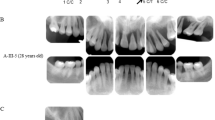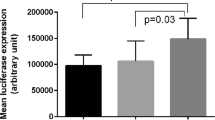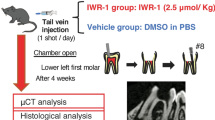Abstract
Lactoferrin is an antimicrobial protein which plays an important role in regulating bacteria that are associated with aggressive periodontitis. Lactoferrin kills directly (via its strongly cationic N-terminal region) and indirectly, through sequestering the iron that bacteria require for growth. As aggressive periodontitis has a strong heritable component, we hypothesized that genetic variation within the lactoferrin gene may play a role in susceptibility to this condition. We have identified and examined a novel, functional, single-point A/G nucleotide mutation causing a threonine/alanine substitution at position 11 (T11A) of the secreted lactoferrin protein. In a pilot case-controlled study of aggressive periodontitis, analysis of 46 African-American patients and 78 controls showed that patients were twice as likely to express the G nucleotide (alanine) allele over controls (60.3 vs 30.4%; P=0.0007, odds ratio=2.564, 95% CI=1.475–4.459). A Caucasian population of 77 patients and 131 controls showed no such association (P=0.5201, odds ratio=0.862, 95% CI=0.548–1.356). The data presented provide a new insight into the genetic susceptibility to aggressive periodontitis.
This is a preview of subscription content, access via your institution
Access options
Subscribe to this journal
Receive 6 digital issues and online access to articles
$119.00 per year
only $19.83 per issue
Buy this article
- Purchase on Springer Link
- Instant access to full article PDF
Prices may be subject to local taxes which are calculated during checkout
Similar content being viewed by others
References
Appelmelk BJ, An YQ, Geerts M, Thijs BG, de Boer HA, MacLaren DM et al. Lactoferrin is a lipid A-binding protein. Infect Immun 1994; 62: 2628–2632.
Caccavo D, Afeltra A, Pece S, Giuliani G, Freudenberg M, Galanos C et al. Lactoferrin–lipid A–lipopolysaccharide interaction: inhibition by anti-human lactoferrin monoclonal antibody AGM 10.14. Infect Immun 1999; 67: 4668–4672.
Chapple DS, Joannou CL, Mason DJ, Shergill JK, Odell EW, Gant V et al. A helical region on human lactoferrin. Its role in antibacterial pathogenesis. Adv Exp Med Biol 1998; 443: 215–220.
Yamauchi K, Tomita M, Giehl TJ, Ellison III RT . Antibacterial activity of lactoferrin and a pepsin-derived lactoferrin peptide fragment. Infect Immun 1993; 61: 719–728.
Zhang GH, Mann DM, Tsai CM . Neutralization of endotoxin in vitro and in vivo by a human lactoferrin-derived peptide. Infect Immun 1999; 67: 1353–1358.
Cohen MS, Mao J, Rasmussen GT, Serody JS, Britigan BE . Interaction of lactoferrin and lipopolysaccharide (LPS): effects on the antioxidant property of lactoferrin and the ability of LPS to prime human neutrophils for enhanced superoxide formation. J Infect Dis 1992; 166: 1375–1378.
Chapple DS, Mason DJ, Joannou CL, Odell EW, Gant V, Evans RW et al. Structure and association of human lactoferrin peptides with Escherichia coli lipopolysaccharide. Antimicrob Agents Chemother 2004; 48: 2190–2198.
Elass-Rochard E, Roseanu A, Legrand D, Trif M, Salmon V, Motas C et al. Lactoferrin–lipopolysaccharide interaction: involvement of the 28–34 loop region of human lactoferrin in the high-affinity binding to Escherichia coli 055B5 lipopolysaccharide. Biochem J 1995; 312 (Part 3): 839–845.
Farnaud S, Spiller C, Moriarty LC, Patel A, Gant V, Odell EW et al. Interactions of lactoferricin-derived peptides with LPS and antimicrobial activity. FEMS Microbiol Lett 2004; 233: 193–199.
Machnicki M, Zimecki M, Zagulski T . Lactoferrin regulates the release of tumour necrosis factor alpha and interleukin 6 in vivo. Int J Exp Pathol 1993; 74: 433–439.
Haversen L, Ohlsson BG, Hahn-Zoric M, Hanson LA, Mattsby-Baltzer I . Lactoferrin down-regulates the LPS-induced cytokine production in monocytic cells via NF-kappa B. Cell Immunol 2002; 220: 83–95.
Mattsby-Baltzer I, Roseanu A, Motas C, Elverfors J, Engberg I, Hanson LA et al. Lactoferrin or a fragment thereof inhibits the endotoxin-induced interleukin-6 response in human monocytic cells. Pediatr Res 1996; 40: 257–262.
Alugupalli KR, Kalfas S . Inhibitory effect of lactoferrin on the adhesion of Actinobacillus actinomycetemcomitans and Prevotella intermedia to fibroblasts and epithelial cells. Apmis 1995; 103: 154–160.
Fine DH, Furgang D . Lactoferrin iron levels affect attachment of Actinobacillus actinomycetemcomitans to buccal epithelial cells. J Periodontol 2002; 73: 616–623.
Groenink J, Walgreen-Weterings E, Nazmi K, Bolscher JG, Veerman EC, van Winkelhoff AJ et al. Salivary lactoferrin and low-Mr mucin MG2 in Actinobacillus actinomycetemcomitans-associated periodontitis. J Clin Periodontol 1999; 26: 269–275.
Kalfas S, Andersson M, Edwardsson S, Forsgren A, Naidu AS . Human lactoferrin binding to Porphyromonas gingivalis, Prevotella intermedia and Prevotella melaninogenica. Oral Microbiol Immunol 1991; 6: 350–355.
Shi Y, Kong W, Nakayama K . Human lactoferrin binds and removes the hemoglobin receptor protein of the periodontopathogen Porphyromonas gingivalis. J Biol Chem 2000; 275: 30002–30008.
Loe H, Brown LJ . Early onset periodontitis in the United States of America. J Periodontol 1991; 62: 608–616.
Singh PK, Parsek MR, Greenberg EP, Welsh MJ . A component of innate immunity prevents bacterial biofilm development. Nature 2002; 417: 552–555.
Singh PK . Iron sequestration by human lactoferrin stimulates P. aeruginosa surface motility and blocks biofilm formation. Biometals 2002; 17: 267–270.
Marazita ML, Burmeister JA, Gunsolley JC, Koertge TE, Lake K, Schenkein HA et al. Evidence for autosomal dominant inheritance and race-specific heterogeneity in early-onset periodontitis. J Periodontol 1994; 65: 623–630.
Velliyagounder K, Kaplan JB, Furgang D, Legarda D, Diamond G, Parkin RE et al. One of two human lactoferrin variants exhibits increased antibacterial and transcriptional activation activities and is associated with localized juvenile periodontitis. Infect Immun 2003; 71: 6141–6147.
Kinane DF, Hodge P, Eskdale J, Ellis R, Gallagher G . Analysis of genetic polymorphisms at the interleukin-10 and tumour necrosis factor loci in early-onset periodontitis. J Periodont Res 2003; 34: 379–386.
Wakeland EK, Liu K, Graham RR, Behrens TW . Delineating the genetic basis of systemic lupus erythematosus. Immunity 2001; 15: 397–408.
Kinane DF, Hart TC . Genes and gene polymorphisms associated with periodontal disease. Crit Rev Oral Biol Med 2003; 14: 430–449.
Soderstrom T, Wikstrom M . Decreased lactoferrin content in granulocytes from subjects with Actinobacillus actinomycetemcomitans associated periodontal diseases. J Parodontol 1990; 9: 195–199.
Wang D, Pabst KM, Aida Y, Pabst MJ . Lipopolysaccharide-inactivating activity of neutrophils is due to lactoferrin. J Leukoc Biol 1995; 57: 865–874.
DiRienzo JM, McKay TL . Identification and characterization of genetic cluster groups of Actinobacillus actinomycetemcomitans isolated from the human oral cavity. J Clin Microbiol 1994; 32: 75–81.
DiRienzo JM, Slots J, Sixou M, Sol MA, Harmon R, McKay TL et al. Specific genetic variants of Actinobacillus actinomycetemcomitans correlate with disease and health in a regional population of families with localized juvenile periodontitis. Infect Immun 1994; 62: 3058–3065.
Ellison III RT, Giehl TJ . Killing of gram-negative bacteria by lactoferrin and lysozyme. J Clin Invest 1991; 88: 1080–1091.
Ulvatne H, Vorland LH . Bactericidal kinetics of 3 lactoferricins against Staphylococcus aureus and Escherichia coli. Scand J Infect Dis 2001; 33: 507–511.
Acknowledgements
This study was supported by the National Institutes of Health, National Institute of Dental and Craniofacial Research grant number 1R21DE014997, by the Health Disparities Program (WJJ and JE) and by the New Jersey Dental School (GPL and JE).
Author information
Authors and Affiliations
Corresponding author
Rights and permissions
About this article
Cite this article
Jordan, W., Eskdale, J., Lennon, G. et al. A nonconservative, coding single-nucleotide polymorphism in the N-terminal region of lactoferrin is associated with aggressive periodontitis in an African-American, but not a Caucasian population. Genes Immun 6, 632–635 (2005). https://doi.org/10.1038/sj.gene.6364239
Received:
Revised:
Accepted:
Published:
Issue Date:
DOI: https://doi.org/10.1038/sj.gene.6364239
Keywords
This article is cited by
-
Cardiometabolic risk factors and lactoferrin: polymorphisms and plasma levels in French-Canadian children
Pediatric Research (2017)
-
Gene polymorphism of β-defensin-1 is associated with susceptibility to periodontitis in Japanese
Odontology (2015)
-
Analysis of new lactotransferrin gene variants in a case–control study related to periodontal disease in dog
Molecular Biology Reports (2012)
-
Periodontitis, periodontopathic bacteria and lactoferrin
BioMetals (2010)
-
Salivary Biomarkers for Clinical Applications
Molecular Diagnosis & Therapy (2009)



